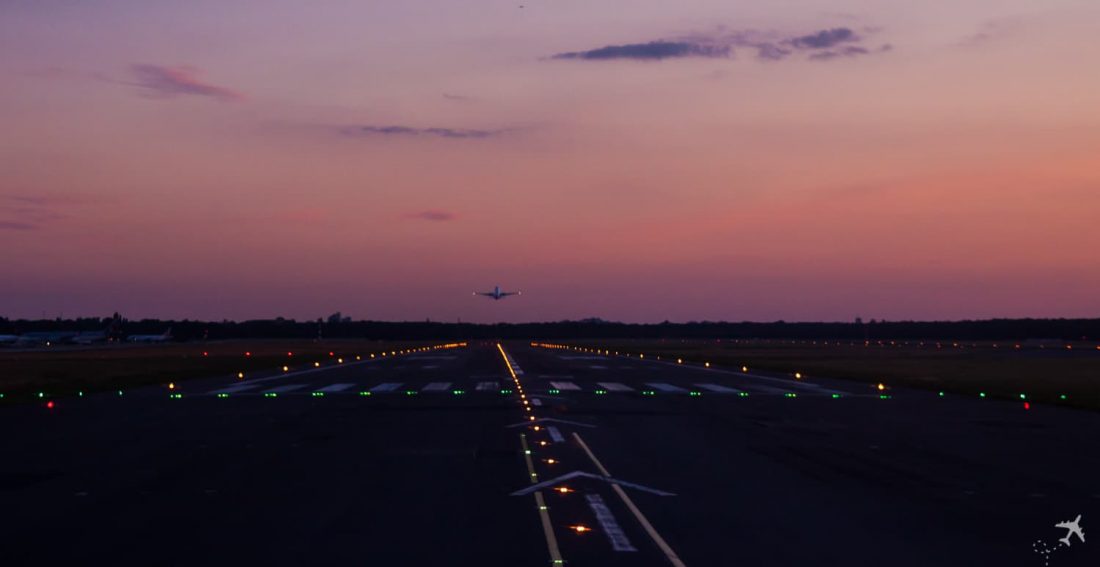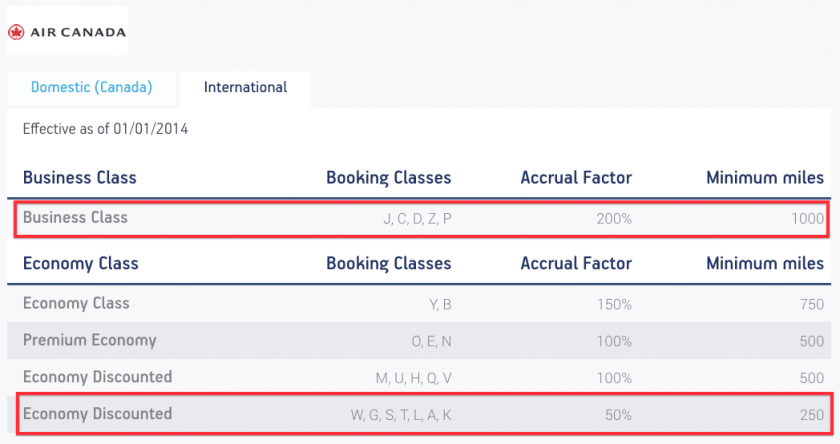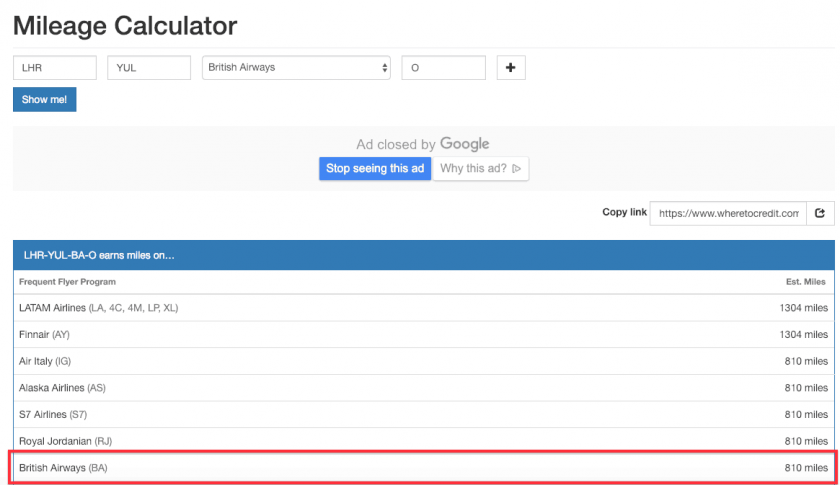How Many Miles Will I Earn on my Next Flight?
Fill the Form if you would like to Book Cheap Travel from the uk and Ireland with Sharingcost.com or just scroll down for content
[contact-form-7]

As a frequent flyer, you should always know upfront how many miles you will be credited with for your flight. This is not only relevant when you’re trying to obtaining elite status with an airline. You also have to consider that, depending on the booking class and the program you are enrolled with, you might not receive any tier or award miles for your flight at all!
Calculating how many miles you can expect to earn on your next flight based on the two main factors -distance and booking class – seems complicated enough. But with some programs, this is just the start. Nowadays it’s not only important how far you’ve flown but also how much money you’ve spent on your ticket. So-called revenue-based mileage calculation seems to take over the frequent traveler industry. We will try to guide you through the process and give you some tips on how to keep track of your miles.
How can I earn miles?
Well, it’s pretty obvious that you can earn miles by flying with an airline of your choice as long as it conducts a frequent flyer program. Since many airlines partner up with competitors to form airline alliances, it’s also possible to collect miles on flights that are operated by other airlines. For example, you can sign up for Lufthansa’s Miles and More program and then receive award and tier miles for flights with their partners Air Canada or Aegean Airlines. That said, you have to choose one program that your miles shall be credited to and can’t bag your miles multiple times.
There are three major airline alliances that you should know about:
- Star Alliance (Lufthansa, Swiss, Austrian Airlines, United, LOT …)
- Oneworld (Air Berlin, British Airways, American Airlines …)
- SkyTeam (KLM / Air France, Delta, Alitalia …)
Additionally, some airlines don’t cooperate with others in the form of alliances but have other forms of collaborations and allow you to receive miles when flying with them. One example is Eurowings. Even though they are not part of Star Alliance, you can credit your miles with, for example, Miles and More. Condor doesn’t operate its own frequent flyer program, but you can receive award miles as a member of Alaska Airlines’ mileage plan.
How to calculate how many miles you’ll receive
Until a few years ago it had been pretty clear: your award miles where calculated based on the booking class and the distance flown. As already mentioned, meanwhile many airlines adopted a new system. In addition to the two known factors, a new coefficient is crucial for the miles you’ll earn: the sales price. Meaning that the more expensive your ticket is, the more miles you’ll receive. Since this is often only the case for award miles and not for tier miles, it adds some more complexity.
Method 1 – Booking class and distance
Even though many airlines switched to a revenue-based system, it is still widespread to calculate miles by using only the booking class and the distance flown. For all frequent flyer programs that use the simple way, the following variables determine the number of credited miles:
- Booking class
- Distance flown (sometimes using multipliers and minimum miles)
- Bonus miles for elite members
A fixed number of miles that you’ll receive is often used on short-haul flights, such as flights within one country. Instead of calculating how many miles you’d earn the airlines just determine an amount, (e.g., 500 miles) for all flights up to a certain distance. Mind you; the booking class is still taken into consideration.
Booking class
Whereas a particular booking class is usually assigned to your travel class (Economy, Premium Economy, Business and First Class), those two terms are not to be confused with each other. Booking classes define a series of factors: First and foremost, the number of miles that are credited to you. Also, your flexibility if it comes to canceling or changing a booking is connected to your booking class as well as the price that you’ll pay for your ticket.
Booking classes can become rather complicated as soon as you start to dig deeper into the subject. For reasons of calcuating the miles that are credited to you, it is good enough to know that they exist and also to know the booking class of your flight.
Derived from the booking class is a multiplier for the miles credited to you. This number typically ranges from 10% up to 300%. Meaning that flights in a booking class assigned to a low-cost Economy Class usually reward you with fewer miles than flights in a booking class that stands for a full flexible First Class ticket.
But not only the booking class itself is crucial for this multiplier. Sometimes you’ll receive more miles with one program than with another, even though the booking class is the same. Since it can be very tricky to find out which frequent flyer program is the best for your particular flight, it is a great help to consult WheretoCredit.com. It’s straight forward: you choose the airlines you’ll be flying with, enter the booking class and the tool returns the amount of miles you can expect with every eligible program.
Alternatively, you can check your frequent flyer program of choice.

Tip: You should be aware of the fact, that the results on WheretoCredit only refer to reward miles. These are more and more often decoupled from tier miles. Therefore you should consult the terms and conditions of your frequent traveler program of choice to see how a flight will help you reach or obtain elite status.
Distance
The distance flown is also very important when it comes to earning miles. But it is not necessarily the actual distance that the plane you were on traveled, that will be used to calculate the mileage. Since it would be impossible to track every single flight and the real route, airlines use the shortest connection between two points on a spherical surface (the so-called orthodromic distance) to calculate the distance. So if the captain on your last flight had to take a detour to get to the scheduled destination: don’t hope for extra miles in your account;)
Before we get into serious math to find out how many miles lie between the origin and the destination of your flight, we will instead refer you to another useful site: MileCalc.com. You can enter the IATA code of various airports and as a result, will receive the exact amount of miles that a plane has to travel to connect these places on the shortest route.
Once you’ve got the number of miles, you now have to multiply them with the multiplier we talked about before. For example, if you where on a flight from London Heathrow to New York’s JFK airport, the shortest routing would be 3.451 miles, one way. If your booking class gets you 75% of the miles flown, this would mean you’ll see 2.588 reward miles added to your account.
In some cases, you will be credited with a minimum amount of miles. This is, as already discussed, usually the case with short-haul flights. Your advantage here is that you’ll always receive the minimum amount, even, if your trip was so short that the calculated number is far below the one guaranteed by the airline.
Calculation
Once we know the distance the plane will travel during our flight and the multiplier we got from our booking class, the rest is simple. This might not be the exact amount of miles that you’ll receive since some airlines use slightly different formulas to calculate the distance. But our result should be very close.
Here’s an example: We’ll assume that we have to fly from London Heathrow (LHR) to Montreal (YUL).
We’re traveling with British Airways and signed up to their frequent flyer program Executive Club in order to collect award miles.
The distance between LHR and YUL (one-way): 3.249
Cheapest Economy Class fare (booking class G, O, or Q): 3.249 x 0,25 = 812 Award Miles
Flexible Business Class fare (booking class J, C, D): 3.249 x 2,5 = 8.123 Award Miles
As you can see, the amount of Miles that you’ll receive very much depends on what booking class your ticket is issued for.
If you don’t want to do the math yourself, you can also use WheretoCredit’s calculator to see what number you can expect in your account. On the website, you have to specify the departure airport as well as your destination and include the name of the carrier and your booking class. The tool will then return the number of miles you’ll be credited with, depending on the frequent flyer program you’re using:

Please, note that the result you’ll get is not correct in 100% of the cases and that some exceptions are not taken into account.
Method 2: Calculation of revenue-based miles
While this used to be the exception, revenue-based calculation of miles is on its way to becoming the standard in the industry, it seems. Luckily there are still a lot of frequent flyer programs out there that don’t care how much you’ve spent on a ticket. But many of them already favor those who pay more for their seats.
With revenue-based calculation, the main factor that will decide how many miles you’ll be credit with is… Exactly, the ticket price. And as you might already have guessed, the revenue-based calculation usually isn’t as attractive as the one where booking class and distance count.
Since you are a reader of this site, you’ll most likely try to find super cheap ways to travel. With the first method of calculation, it doesn’t matter, how much you paid for your business class flight. It will still get you a nice sum of miles that will be credited to you. This stops with the calculation based on ticket pricing. But if you like it or not, the airline dictates the rules of its frequent flyer program, and we’ll have to take what we get.
Calculate your fare
Even though it might seem to be the logical thought one has when hearing the term revenue-based, the price you actually paid for the ticket is not what matters. Instead, taxes and various fees will be deducted from the price and what’s left is the fare that will be used to calculate your miles.
Below you’ll see the price breakdown for a flight with United from New York to Los Angeles. Only the shown fare will be used to calculate your miles:

To find out how many miles you can expect you’ll need to know what formula the frequent flyer program uses. It’s typically published somewhere on their website. In United’s case the calculation should look like this:
Basic Award Miles = Fare x 5
So for our flight from New York to San Francisco, we would receive somewhere around 700 Miles. A fare of approximately 140$ multiplied with the factor 5.
By the way: if you’re flying United, you can skip all the calculation. You’ll see the exact amount of miles after you’ve chosen your flight:

Which frequent flyer program is best for me?
This is a question often asked but there’s no right answer. It really depends on what you want and of course which airline(s) you fly with. Are you looking to get a lot of award miles or is it a special tier status you’re going for? Which alliance does your favorite carrier belong to?
If you want to become a Star Alliance Gold member, the frequent flyer programs offered by Aegean Airlines and United Airlines might be exciting for you. We talk about a couple of other possible picks in this article:
British Airways’ Executive Club can be a great choice if you’re into collecting award miles (BA calls them Avios) and redeeming them for good value.
Of course, you should keep in mind that it sometimes just won’t be possible to choose which alliance you’ll travel with. Flights within one country are very often only offered by national airlines, and therefore your choice is limited.
It’s also always a good idea to check the award and tier miles charts that the airlines offer. That way you can get a good idea of the number of miles you’ll be credited with and also find out, what method the airlines are using.
It is essential to limit the number of frequent flyer programs you sign up for. One per alliance should be enough. Otherwise, you’ll have a hand full of miles in various accounts and won’t be able to reach a tier status nor will you collect enough miles to redeem them for something worthwhile. Be aware of the fact that miles can rarely be transferred between two programs!
If you want to dig into this topic a little deeper and calculate the potential miles for your next trip, here’s a list of some major Airlines and the link to their frequent flyer program:
- Aegean Airlines – Miles + Bonus
- Air Canada – Aeroplan
- Air France / KLM – Flying Blue
- Alitalia – Mille Miglia
- American Airlines – AAdvantage
- British Airways – Executive Club
- Cathay Pacific – Marco Polo Club
- China Airlines – Dynasty Member
- Delta – SkyMiles
- Emirates – Skywards
- Etihad – Etihad Guest
- Finnair – Finnair Plus
- Iberia – Iberia Plus
- Japan Airlines – JAL Mileage Bank
- LATAM – LATAM Pass
- Lufthansa, Austrian, SWISS, LOT – Miles & More
- Qantas – Qantas Frequent Flyer
- Qatar – Privilege Club
- SAS – EuroBonus
- TAP – TAP Miles&Go
- Turkish Airlines – Miles&Smiles
- United – MileagePlus
* What the star implies: Links marked with a * mean that we will receive a commission if a booking or a specific action is made via the linked provider. There will be no additional costs for you, and in return, we can offer you Travel-Dealz without annoying display advertisement. Also, we won't receive any money just by setting links.
source https://sharingcost.com/how-many-miles-will-i-earn-on-my-next-flight/
Comments
Post a Comment